Day 1 – Tokyo

![]() Tsukiji Fish Market is the largest fish market in the world, and as time has gone on it’s become one of the most authentic and special tourist attractions in Tokyo.
Tsukiji Fish Market is the largest fish market in the world, and as time has gone on it’s become one of the most authentic and special tourist attractions in Tokyo.
Senso-ji Temple also known as Asakusa Kannon and located in Tokyo’s Asakusa district, is the city’s oldest religious building and one of its most colorful and popular. With roughly 20 million annual visitors, it’s also the most visited-temple in Japan and the most-frequented spiritual site in the world.
Tokyo Skytree The observation decks are located on the 45th floor of their respective towers and offer views from 202 meters above the ground. From the Tocho it is possible to see Meiji Jingu, Tokyo Tower, the Tokyo Skytree and Mount Fuji. With a whopping height of 634 meters, Tokyo Skytree was recognized as the world’s tallest tower by Guinness World Records on November 11, 2011.
Imperial Palace is the residence of Japan’s Imperial Family. Edo Castle used to be the seat of the Tokugawa shogun who ruled Japan from 1603 until 1867. Enjoy the visit to The East Garden of the Imperial Palace. Prior booking is required if you are interested to see inside the palace.
Akihabara is a buzzing shopping hub famed for its electronics retailers, ranging from tiny stalls to vast department stores like Yodobashi Multimedia Akiba. Venues specializing in manga, anime, and video games include Tokyo Anime Center, for exhibits and souvenirs, and Radio Kaikan with 10 floors of toys, trading cards, and collectibles. Staff dressed as maids or butlers serve tea and desserts at nearby maid cafes.
Meiji Jingu Shrine is surrounded by a lush green forest right in the heart of Tokyo, Meiji Shrine is a Shinto shrine in Shibuya, Tokyo, that is dedicated to the deified spirits of Emperor Meiji and his wife, Empress Shōken. The shrine does not contain the emperor’s grave, which is located at Fushimi-momoyama, south of Kyoto.
Takeshita Street is popular street in Harajuku known for wacky, youth-driven shops selling colorful and crazy clothes and accessories. It’s also a paradise for sweets-lovers – don’t miss the fluffy, sugary crepes.
Shibuya Crossing is the world’s busiest pedestrian crossing, with as many as 3,000 people crossing at a time. The sprawling scramble intersection just outside Shibuya Station is an embodiment of Tokyo itself: action in all directions.
Tokyo Tower is a communications and observation tower. It’s the world’s tallest tower at 634 meters. Based on the Eiffel Tower in design, Tokyo Tower was completed in 1958.
teamLab Planets TOKYO Here you walk through water, and a garden where you become one with the flowers. There are four massive exhibition spaces and two gardens. Note: This attraction is possible to visit if have a time.
Statue of Liberty A very popular photo-op, with the Rainbow Bridge in the background, is this 11m-tall replica of Lady Liberty, a fixture on Odaiba’s waterfront since 1998. Note: This attraction is possible to visit if have a time.
Day 2 – Kamakura & Yokohama
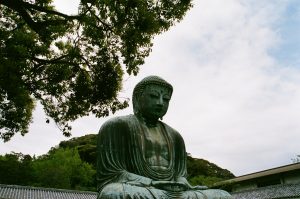 Hokokuji Temple (Takedera Temple) is famous for its bamboo garden, it is also known as “Bamboo Temple”. A statue of Gautama Buddha, called Shaka Nyorai in Japanese, in a sacred hall is the temple’s principal image.
Hokokuji Temple (Takedera Temple) is famous for its bamboo garden, it is also known as “Bamboo Temple”. A statue of Gautama Buddha, called Shaka Nyorai in Japanese, in a sacred hall is the temple’s principal image.
Hase-dera Temple is one of the Buddhist temples in the city of Kamakura in Kanagawa Prefecture, Japan, famous for housing a massive wooden statue of Kannon.
Kotoku-in (Great Buddha of Kamakura) Kōtoku-in is a Buddhist temple of the Jōdo-shū sect, in the city of Kamakura in Kanagawa Prefecture, Japan. Its mountain name is Taiizan, and its common temple name is Shōjōsen-ji.
Tsurugaoka Hachimangu Shrine is a cultural center of the city of Kamakura and serves as the venue of many of its most important festivals with two museums. Two beautiful ponds represent the Taira and Minamoto clans.
Kamakura Komachidori is busy pedestrian walkway lined with apparel, gift & souvenir stores, plus eateries & sweet shops.
Yokohama Chinatown is about 160 years old, with a population of about 3,000 to 4,000. Today, only a few Chinese people still live there, most being from Guangzhou.
Sankeien Gardens is a traditional Japanese-style garden in Naka Ward, Yokohama, Japan, which opened in 1906. Sankei-en was designed and built by Tomitaro Hara, known by the pseudonym Sankei Hara, who was a silk trader.
Minatomirai We will visit this place if time permits. Minatomirai is a futuristic waterfront with a high-rise observation deck and stylish boutiques at Yokohama Landmark Tower and Plaza. Families also take in the skyline from the Cosmo Clock 21 Ferris wheel or tour the 1930s sailing ship Nippon Maru. Mitsubishi Industrial Museum has dynamic exhibits of rockets and submarines, while Rinko Park hosts summer concerts. Waterside promenades host upscale bars and eateries.
Day 3 – Mount Fuji
 Oshino Hakkai are the eight springs found in Oshino, Yamanashi, Japan. The aquifer water from Mount Fuji comes out to the ground to form these springs. They are a Natural monument of Japan, part of the Mount Fuji World Heritage Site, and one of Yamanashi Prefecture’s important tourist attractions.
Oshino Hakkai are the eight springs found in Oshino, Yamanashi, Japan. The aquifer water from Mount Fuji comes out to the ground to form these springs. They are a Natural monument of Japan, part of the Mount Fuji World Heritage Site, and one of Yamanashi Prefecture’s important tourist attractions.
Chureito Pagoda The five-storied Chureito Pagoda in Yamanashi Prefecture is a key part of Japan’s most recognizable landscape—the area around Mount Fuji. It honors those lost from the First Sino-Japanese War in 1868 all the way to WWII. Today, the pagoda stands proudly as the centrepiece for Arakura Sengen Shrine.
Lake Kawaguchiko is the most easily accessible of the Fuji Five Lakes with train and direct bus connections to Tokyo. A hot spring resort town with various tourist attractions and views of Mount Fuji is located around the lake’s eastern end, while the northern and western shores are mostly undeveloped.
The Mount Fuji Panoramic Ropeway ascends 400 meters from the eastern shore of Lake Kawaguchiko to an observation deck near the peak of Mount Tenjo. From the observation deck, which sits more than 1000 meters above sea level, there are panoramic views of the lake below and of Mount Fuji.
Oishi Park is one of the best spots to view Mt Fuji. The view from Oishi Park consists of Mt Fuji in the background, Kawaguchiko (Lake) in the mid ground and the lavender of Oishi Park in the foreground. The lavender blooms from the middle of June to the middle of July, which it means it is unlikely that Mt Fuji will have a snow cap.
Saiko Iyashi no Sato Nemba Wander around this charming village and go back in time, exploring a replica of an old Japanese village. This is definitely one of the top attractions in the Fujikawaguchiko region. Lovely thatched roofed buildings stand facing Mount Fuji, these have been rebuilt with great attention to details after the village was destroyed by a landslide during a typhoon in the late sixties.
Arakura Fuji Sengen Shrine This scenic park located on the mountainside of Mt. Arakura and in front of Mt .Fuji, offers a panoramic view of the city. A lot of people enjoy cherry blossoms in the park in spring, and also enjoy hiking.
Mt. Fuji 5th Station attracts hikers and climbers from the world over, and most of them start their ascents at the 5th station, halfway up the mountain. You can have an amazing experience the atmosphere of this symbol of Japan, you can climb or drive to Fuji Subaru Line 5th Station for spectacular views.
Gotemba Premium Outlets is regarded as Japan’s premium green tea growing area, with leaves grown at the foot of Mt. Fuji. Shizuoka prefecture is known to be the horseradish capital of Japan and Gotemba itself has several wasabi farms.
Day 4 – Hakone
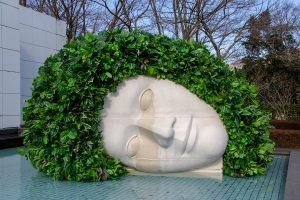
Onshi Hakone Park Onshi Hakone Park is a beautiful park located on the side of Lake Ashi. It is built on the small peninsula. It has a great view of Mt. Fuji and Lake Ashi.
Mt. Sengen (Hakone-machi) Hakone is a beautiful town that sits in the foothills of Mount Fuji and is only a stone’s throw from the capital of Tokyo. Hakone is close to Tokyo and Mount Fuji and is a popular travel destination. Hakone can be enjoyed year-round with its stunning seasonal landscape and many events.
Mount Fuji is an active volcano about 100 kilometers southwest of Tokyo. Commonly called “Fuji-san,” it’s the country’s tallest peak, at 3,776 meters. A pilgrimage site for centuries, it’s considered one of Japan’s 3 sacred mountains, and summit hikes remain a popular activity.
Mount Hakone is a complex volcano in Kanagawa Prefecture, Japan that is truncated by two overlapping calderas, the largest of which is 10 × 11 km wide. The calderas were formed as a result of two major explosive eruptions about 180,000 and 49,000–60,000 years ago.
Hakone Shrine / Kuzuryu Shrine Singu stands at the foot of Mount Hakone along the shores of Lake Ashi. The shrine buildings are hidden in the dense forest.
Hakone-machi Enjoy flora year-round in nature-filled Hakone.
Amazake Tea House Amazake-chaya Tea House was founded 400 years ago and is a relaxing place where visitors can rest. Their amazake (sweet rice wine) is made with a recipe that has remained unchanged since opening.
Lake Ashinoko is a scenic lake in the Hakone area of Kanagawa Prefecture in Honshū, Japan. It is a crater lake that lies along the southwest wall of the caldera of Mount Hakone, a complex volcano that last erupted in 1170 CE at Ōwakudani.
Owaku-dani Valley Kuro-tamago, literally “black eggs,” are regular chicken eggs boiled in Owakudani’s natural hot springs. The sulfur in the water turns the eggshells as black as charcoal. According to local lore, eating one egg will add seven years to your life.
The Hakone Open-Air Museum is an outdoor sculpture gallery that plays with nature. Situated in the mountains of Hakone , it spreads across 70,000 square meters and has beautiful views of the surrounding mountains.
Day 5 – Nikko
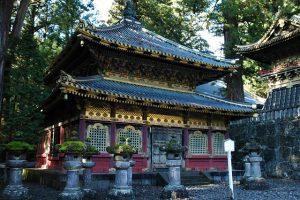 Nikko Toshogu Shrine is the most famous sightseeing attraction in Nikko and is popular for its many colorful buildings which are richly decorated with gorgeous carvings. The shrine is dedicated to the spirit of the shogun Tokugawa Ieyasu (1543 – 1616), and it is also the location of his grave.
Nikko Toshogu Shrine is the most famous sightseeing attraction in Nikko and is popular for its many colorful buildings which are richly decorated with gorgeous carvings. The shrine is dedicated to the spirit of the shogun Tokugawa Ieyasu (1543 – 1616), and it is also the location of his grave.
Nikko’s Shinkyo Bridge is a sacred river crossing which officially belongs to nearby Futarasan Jinja Shrine. One of Nikko’s best-known sightseeing spots, the elegant arc of this bridge crosses the Daiya-gawa River and its vermilion and black lacquer contrasts beautifully with the natural scenery about it.
Narabi Jiizo (地蔵/womb of the earth), as they are called, are made in the image of Jizo Bosatsu, guardian deity of children and travellers. They’re also known as the ‘earth bearer’, so jizo statues are made out of stone, which is said to have a spiritual power for protection and longevity that predates Buddhist beliefs.
Constructed as a retreat for Emperor Taisho, Nikko Tamozawa Imperial Villa incorporates the architectural styles of the late Edo (1603-1867), Meiji (1868-1912) and Taisho (1912-1926) periods. Visitors can explore the diverse buildings and beautiful gardens while getting a feel for Japanese imperial culture.
Best to explore the spectacular view of Kegon Falls, Lake Chuzenji, and the scenery of Mt. Nantai from this deck. The Akechidaira Observation Deck is famous as a spot for viewing Nikko’s splendid autumn leaves.
Kegon Falls is located at Lake Chūzenji in Nikkō National Park near the city of Nikkō, Tochigi Prefecture, Japan. The falls were formed when the Daiya River was rerouted by lava flows. Historically known as one of Japan’s top three greatest waterfalls, Kegon Falls offers stunning views every season. Spring is lush with flora, while in summer, its waters attract flocks of migrating Asian house martins.
Lake Chūzenji, also called Sea of Happiness, is a scenic lake in Nikkō National Park in the city of Nikkō, Tochigi Prefecture, Japan. It was created 20,000 years ago when Mount Nantai erupted and blocked the river. The lake has a surface area of 11.62 km² and a circumference of 25 km.
Day 6 – Kyoto
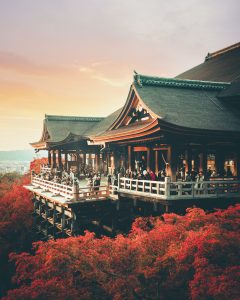 Kiyomizu-dera (清水寺, Kiyomizu Temple, “Pure Water Monastery”) is a Buddhist temple located in eastern Kyoto, Japan. The temple’s present buildings were constructed in 1633, ordered built by Tokugawa Iemitsu. There is not a single nail used in the entire structure. It takes its name from the waterfall within the complex, which runs off the nearby hills. Kiyomizu means clear water, or pure water.
Kiyomizu-dera (清水寺, Kiyomizu Temple, “Pure Water Monastery”) is a Buddhist temple located in eastern Kyoto, Japan. The temple’s present buildings were constructed in 1633, ordered built by Tokugawa Iemitsu. There is not a single nail used in the entire structure. It takes its name from the waterfall within the complex, which runs off the nearby hills. Kiyomizu means clear water, or pure water.
Sanjūsangen-dō is a Buddhist temple of the Tendai sect in the Higashiyama district of Kyoto, Japan. The temple was founded in 1164 by Taira no Kiyomori for the cloistered Emperor Go-Shirakawa. It is officially known as Rengeō-in and belongs to the Myōhō-in temple complex.
The Yasaka Shrine became the object of Imperial patronage during the early Heian period. Today, in addition to hosting the Gion Matsuri, Yasaka Shrine welcomes thousands of people every New Year, for traditional Japanese New Year rituals and celebrations. In April, the crowds pass through the temple on their way to Maruyama Park, a popular hanami (cherry blossom viewing) site. Lanterns decorate the stage with the names of festival sponsors.
Nishiki Market is a marketplace in downtown Kyoto, located on the east end of Nishikikōji Street, one block north and parallel to Shijō Street and west of Teramachi Street. Rich with history and tradition, the market is renowned as the place to obtain many of Kyoto’s famous foods and goods.
Fushimi Inari-taisha Shrine is famous for its tunnels of more than 10,000 closely-spaced orange torii gates that wind over the hills of Mt. Inari beyond the entrance to the shrine. Inari is the patron deity of agriculture and business, and Fushimi Inari Shrine is the number one Inari shrine in the whole of Japan.
Nijō Castle is a flatland castle in Kyoto, Japan. The castle consists of two concentric rings of fortifications, the Ninomaru Palace, the ruins of the Honmaru Palace, various support buildings and several gardens.
Day 7 – Kyoto
 Kinkaku-ji Temple is known as “the Golden Pavilion” for a very special reason – its top two stories are actually covered in gold leaf. Its shining surface reflects into the kyoko-chi, or Mirror Pondkyo.
Kinkaku-ji Temple is known as “the Golden Pavilion” for a very special reason – its top two stories are actually covered in gold leaf. Its shining surface reflects into the kyoko-chi, or Mirror Pondkyo.
The Arashiyama Bamboo Grove consists mostly of mōsō bamboo and has several pathways for tourists and visitors. The Ministry of the Environment considers it a part of the soundscape of Japan. Arashiyama is famous for its Sagano Romantic Train ride, whether during spring for its cherry blossoms or autumn for the brilliant colors of its maple leaves. It is also renowned for its landmark bridge, Togetsukyo which is used in many tourist promotion photos.
Tenryū-ji, formally known as Tenryū Shiseizen-ji, is the head temple of the Tenryū-ji branch of the Rinzai sect of Zen Buddhism. In 1994, Tenryuji became a UNESCO World Heritage Site. Tenryuji Temple in Kyoto is famous for the beauty of its autumn maple leaves.
Arashiyama Observation Deck is one of the famous spots to enjoy the view of Arashiyama. You can see beautiful greenery surrounding the town with a beautiful view of the mountain in the back.
Arashiyama Kimono Forest, some of the more than 30 traditional Kyo-Yuzen kimono fabric designs at the Arashiyama Kimono Forest. The Saga-Arashiyama area in the western part of Kyoto is one of the most popular tourist destinations in all of Japan.
Arashiyama Monkey Park Iwatayama is a commercial park located in Arashiyama in Kyoto, Japan. The park is on Mt Arashiyama, on the opposite side of the Ōi River as the train station. It is inhabited by a troop of over 120 Japanese macaque monkeys. The animals are wild but can be fed food purchased at the site.
Gion, Kyoto’s geisha district, is very atmospheric at night. If you want to learn more about geishas and their lifestyle take this guided night walk. If you really want to spoil yourself with a delicious traditional Japanese Kaiseki dinner, this Kyoto Night Food Tour is something for you.
Day 8 – Osaka
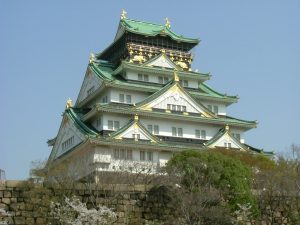 Osaka Castle is a Japanese castle in Chūō-ku, Osaka, Japan. The castle is one of Japan’s most famous landmarks and it played a major role in the unification of No during the sixteenth century of the Azuchi-Momoyama period.
Osaka Castle is a Japanese castle in Chūō-ku, Osaka, Japan. The castle is one of Japan’s most famous landmarks and it played a major role in the unification of No during the sixteenth century of the Azuchi-Momoyama period.
Shitennoji temple is sometimes regarded as the first Buddhist and oldest officially-administered temple in Japan, although the temple complex and buildings have been rebuilt over the centuries, with the last reconstruction taking place in 1963. It is the head temple of the Wa Sect of Buddhism.
Sumiyoshi Taisha Shrine is the main shrine of all the Sumiyoshi shrines in Japan. However, the oldest shrine that enshrines the Sumiyoshi sanjin, the three Sumiyoshi kami, is the Sumiyoshi Shrine in Hakata.
teamLab Botanical Garden Osaka is an open-air botanical garden. The artworks in this exhibition transform interactively, influenced by wind and rain as well as the trees and birds that live in the garden. When the night falls, the garden grounds come alive with the immersive installations of teamLab’s permanent exhibition, turning into a surreal world of color and light.
Kuromon Market, Spacious market with vendors selling street food, fresh produce & shellfish, plus souvenirs.
Dōtonbori or Dōtombori is one of the principal tourist destinations in Osaka, Japan, running along the Dōtonbori canal from Dōtonboribashi Bridge to Nipponbashi Bridge in the Namba district of the city’s Chuo ward.
Day 9 – Nara
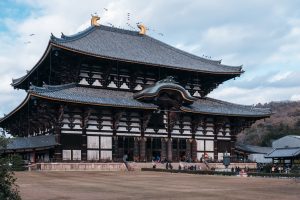 Todai-ji Nigatsu-dō is one of the important structures of Tōdai-ji, a temple in Nara, Japan. Nigatsu-dō is located to the east of the Great Buddha Hall, on the hillside of Mount Wakakusa. It includes several other buildings in addition to the specific hall named Nigatsu-dō, thus comprising its own sub-complex within Tōdai-ji.
Todai-ji Nigatsu-dō is one of the important structures of Tōdai-ji, a temple in Nara, Japan. Nigatsu-dō is located to the east of the Great Buddha Hall, on the hillside of Mount Wakakusa. It includes several other buildings in addition to the specific hall named Nigatsu-dō, thus comprising its own sub-complex within Tōdai-ji.
Kōfuku-ji is a Buddhist temple that was once one of the powerful Seven Great Temples in the city of Nara, Japan. The temple is the national headquarters of the Hossō school.
Alongside Naramachi and Nishinokyo, Nara Park is one of the must-see areas in Nara City. The vast area covers 660 hectares and is renowned for its free-roaming deer and world famous temples. Feeding the deer is an attraction in itself and special crackers are on sale all around the park.
Sanjo dori Street is a boulevard running through the heart of Nara City, the prefectural seat of government, in the east-west direction. Summary. Starting at the torii gate of Kasuga-taisha Shrine, the road extends into Ikoma City (Nara Prefecture) and to Kuragari-toge Pass in Mt. Ikoma.
Isuien Garden and Neiraku Museum opened in April 1969. It contains the works collected by Nakamura Junsaku (1875–1953), who was the founder of the Isuien Garden. The collection totals over 2000 items, which includes bronze wares, seals and mirrors of ancient China as well as pottery of ancient Korea. The museum building was built in a traditional style and features rotating exhibitions.
Day 10 – Kobe
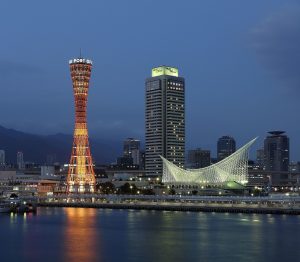 Nunobiki Falls is a set of waterfalls near downtown Kobe, Japan, with an important significance in Japanese literature and Japanese art. In Japan, Nunobiki is considered one of the greatest “divine falls” together with Kegon Falls and Nachi Falls.
Nunobiki Falls is a set of waterfalls near downtown Kobe, Japan, with an important significance in Japanese literature and Japanese art. In Japan, Nunobiki is considered one of the greatest “divine falls” together with Kegon Falls and Nachi Falls.
Ikuta Shrine (生田神社, Ikuta-jinja) is a Shinto shrine in the Chūō Ward of Kobe, Japan, and is possibly among the oldest shrines in the country. There remains the historic landmark “Ikuta Forest ” in the northern part of the silent precinct of the shrine, which is well known as the battle field of Genpei War.
Kobe Chinatown Nankin-machi is a neighborhood in Kobe, Japan located south of Motomachi station adjacent to the Daimaru Department Store and is a major tourist attraction. Considered as Kobe’s Chinatown, the area has over a hundred Chinese restaurants, shops, and a Chinese temple dedicated to Lord Guan.
Mount Rokko Cable Car opened in 1932. The cable car connects the Rokko Cable Lower Station at the foot of the mountain, which has a height difference of approximately 500 m and a total length of approximately 1,700 m, to the Rokko Sanjo Station in approximately 10 minutes.
Weathercock House (The Former Thomas House) By all means, feel the history and sightseeing scenery of Kobe, and drop in at Kobe’s Ijinkan, Kazamidori no Yakata.